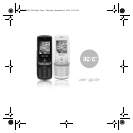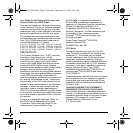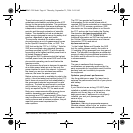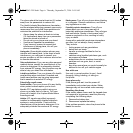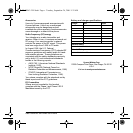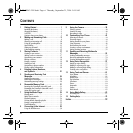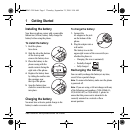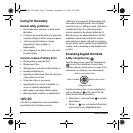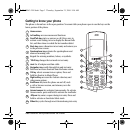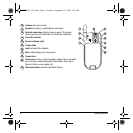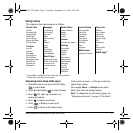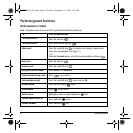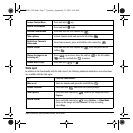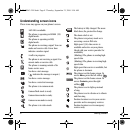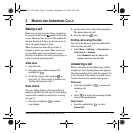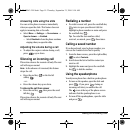
iv
The phone should be kept at least six (6) inches
away from the pacemaker to reduce risk.
The Health Industry Manufacturers Association
and the wireless technology research community
recommend that you follow these guidelines to
minimize the potential for interference.
• Always keep the phone at least six inches
(15 centimeters) away from your pacemaker
when the phone is turned on.
• Do not carry your phone near your heart.
• Use the ear opposite the pacemaker.
• If you have any reason to suspect that
interference is taking place, turn off your
phone immediately.
Hearing aids—Some digital wireless phones may
interfere with hearing aids. In the event of such
interference, you may want to consult your
service provider or call the customer service line
to discuss alternatives.
Other medical devices—If you use any other personal
medical device, consult the manufacturer of the
device to determine if it is adequately shielded
from external RF energy. Your physician may be
able to help you obtain this information.
In health care facilities—Turn your phone off in health
care facilities when instructed. Hospitals and
health care facilities may be using equipment
that is sensitive to external RF energy.
Potentially unsafe areas
Posted facilities—Turn your phone off in any facility
when posted notices require you to do so.
Aircraft—FCC regulations prohibit using your
phone on a plane that is in the air. Turn your
phone off or switch it to Airplane Mode before
boarding aircraft.
Vehicles—RF signals may affect improperly
installed or inadequately shielded electronic
systems in motor vehicles. Check with the
manufacturer of the device to determine if it is
adequately shielded from external RF energy.
Blasting areas—Turn off your phone where blasting
is in progress. Observe restrictions, and follow
any regulations or rules.
Potentially explosive atmospheres—Turn off your
phone when you are in any area with a
potentially explosive atmosphere. Obey all signs
and instructions. Sparks in such areas could
cause an explosion or fire, resulting in bodily
injury or death.
Areas with a potentially explosive atmosphere
are often, but not always, clearly marked.
They include:
• fueling areas such as gas stations
• below deck on boats
• transfer or storage facilities for fuel or
chemicals
• vehicles using liquefied petroleum gas, such
as propane or butane
• areas where the air contains chemicals or
particles such as grain, dust, or metal
powders
• any other area where you would normally be
advised to turn off your vehicle engine
Use with care
Use only in normal position (to ear). Avoid
dropping, hitting, bending, or sitting on
the phone.
Keep phone dry
If the phone gets wet, turn the power off
immediately and contact your dealer. Water
damage may not be covered under warranty.
Resetting the phone
If the screen seems frozen and the keypad does
not respond to keypresses, reset the phone by
completing the following steps:
1. Remove the battery door.
2. Remove and replace the battery.
If the problem persists, return the phone to the
dealer for service.
82-N8963-3EN.book Page iv Thursday, September 21, 2006 9:04 AM



